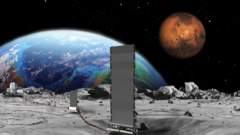NASA's ambitious timeline for building a nuclear reactor on the Moon seeks to further U.S. efforts to establish a long-term human presence in space. With plans to recruit commercial partners to construct the reactor, NASA faces challenges related to funding cuts and safety concerns surrounding the launch and operation of nuclear materials. While the idea of a lunar nuclear power source is not new, experts claim it remains a necessity to ensure consistent power amidst the Moon’s harsh environment, where solar energy is infeasible during prolonged periods of darkness.
According to U.S. transport secretary Sean Duffy, the project's urgency is underscored by international competitors in space exploration. This competitive backdrop raises questions about international agreements, like the Artemis Accords, which aim to govern operations on the lunar surface, amidst fears of potential territorial claims. Though experts believe it is technically feasible to achieve by 2030 if sufficient funding is allocated, concerns linger about whether NASA can successfully integrate these plans into an effective lunar infrastructure.
According to U.S. transport secretary Sean Duffy, the project's urgency is underscored by international competitors in space exploration. This competitive backdrop raises questions about international agreements, like the Artemis Accords, which aim to govern operations on the lunar surface, amidst fears of potential territorial claims. Though experts believe it is technically feasible to achieve by 2030 if sufficient funding is allocated, concerns linger about whether NASA can successfully integrate these plans into an effective lunar infrastructure.


















